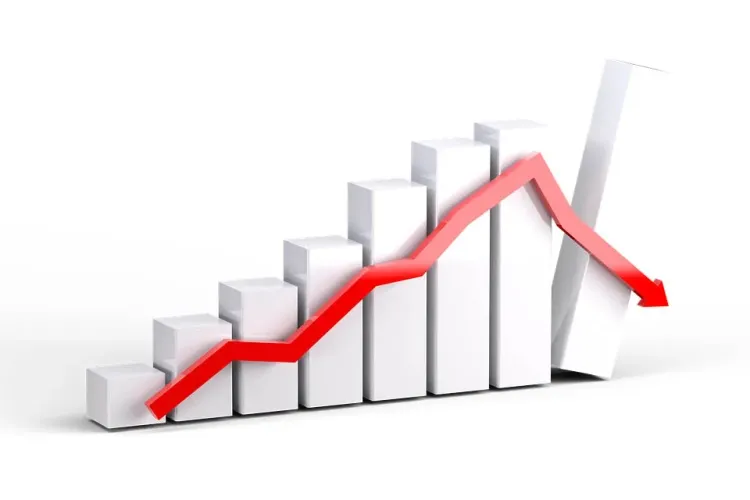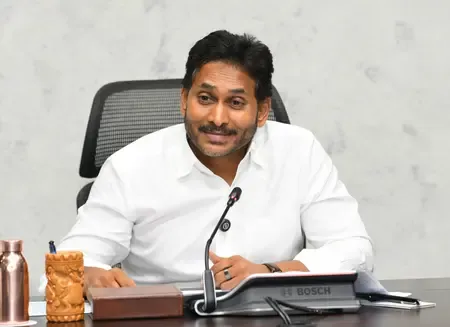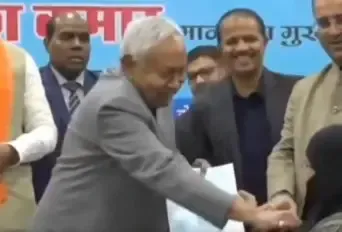Significant Reduction in Rural Poverty in India: From 25.7% to 4.86% Over 12 Years, SBI Report

New Delhi, Jan 3 (NationPress) India's rural poverty ratio has experienced a remarkable drop to 4.86 percent in the financial year 2023-24 from 25.7 percent in 2011-12, while urban poverty has decreased to 4.09 percent from 4.6 percent over the same period, according to a recent SBI Research report released on Friday.
"At a broad level, we believe poverty rates in India are now likely between 4 percent and 4.5 percent, indicating a near-absence of extreme poverty," the report stated.
"The significant decrease in the rural poverty ratio results from enhanced consumption growth among the lowest 0-5 percent income decile, significantly aided by Government support. This assistance has proven crucial, as we observe that fluctuations in food prices greatly impact not only food expenditure but overall spending as well," the report elaborated.
Based on the fractile distribution for 2023-24, the estimated poverty proportion in rural regions stands at 4.86 percent, while in urban areas, it is 4.09 percent for FY24. This marks a substantial reduction from FY23 estimates, where rural poverty was at 7.2 percent and urban poverty at 4.6 percent, as highlighted in the report.
"Minor adjustments to these figures may occur upon the completion of the 2021 census and the subsequent release of updated Rural-Urban population data. We anticipate urban poverty could further diminish," the report indicated.
One factor contributing to the increasingly narrowing income disparity between rural and urban areas, as well as the vertical income gap within rural classes, is the improved physical infrastructure facilitating rural mobility, according to the report.
"The monthly per capita consumption expenditure (MPCE) difference between rural and urban areas has now narrowed to 69.7 percent, a swift decline from 88.2 percent in 2009-10. This progress is primarily due to Government initiatives such as Direct Benefit Transfers, rural infrastructure development, increasing farmers' income, and significantly enhancing rural livelihoods," the SBI report noted.
The report also emphasized that food inflation affects consumption demand more severely in lower-income states compared to their higher-income counterparts, indicating that rural residents in low-income states are comparatively more risk-averse than those in wealthier states.
Additionally, the report projected that inflation for November 2024, due to new weightings, would be 5.0 percent compared to 5.5 percent.
It highlighted that many high-income states surpass the national average savings rate of 31 percent, whereas states like Uttar Pradesh and Bihar demonstrate lower savings rates, likely due to higher out-migration.
The poverty ratio estimates for 2023-24 were derived based on a newly estimated poverty line of Rs 1,632 for rural areas and Rs 1,944 for urban areas in 2023-24.
Beginning with the 2011-12 poverty line estimates of Rs 816 in rural areas and Rs 1,000 in urban areas, the new poverty line has been adjusted for decadal inflation and imputation factors derived from the NSSO report.
Rural consumption is rapidly approaching urban consumption, with the gap diminishing from 88.2 percent in 2004-05 to 69.7 percent in 2023-24, as stated in the report.
According to the findings, the average rural consumption has surged due to Government initiatives aimed at supporting the most disadvantaged segments of society.
Approximately 30 percent of the rural MPCE is attributed mainly to Government actions regarding direct benefit transfers (DBT), rural infrastructure enhancement, increasing farmers' income, and significantly improving rural livelihoods.
The disparity in monthly per capita consumption expenditure (MPCE) between rural and urban areas is narrowing across all states, regardless of income categories.
Interestingly, the report highlights that states previously considered lagging, such as Bihar and Rajasthan, are showing the greatest improvements in closing the rural-urban divide.
Furthermore, consumer behavior has shifted from food to non-food items, indicating an elevated standard of living, as residents are increasingly purchasing manufactured goods, including toiletries and clothing.
This transformation in consumer preferences has been observed in both rural and urban sectors over the past 12 years.
Infrastructure projects contributing to this prosperity consist mainly of 4/8 Lane National Highways spanning approximately 150,000 kilometers. Improved connectivity has facilitated real-time two-way access.
The Pradhan Mantri Gram Sadak Yojana (PMGSY) has significantly enhanced rural connectivity, with over 700,000 kilometers of roads constructed in rural regions. This seamless connectivity, coupled with enhanced transportation means, has profoundly transformed consumption patterns, altering buying and selling behaviors, as emphasized by the report.










